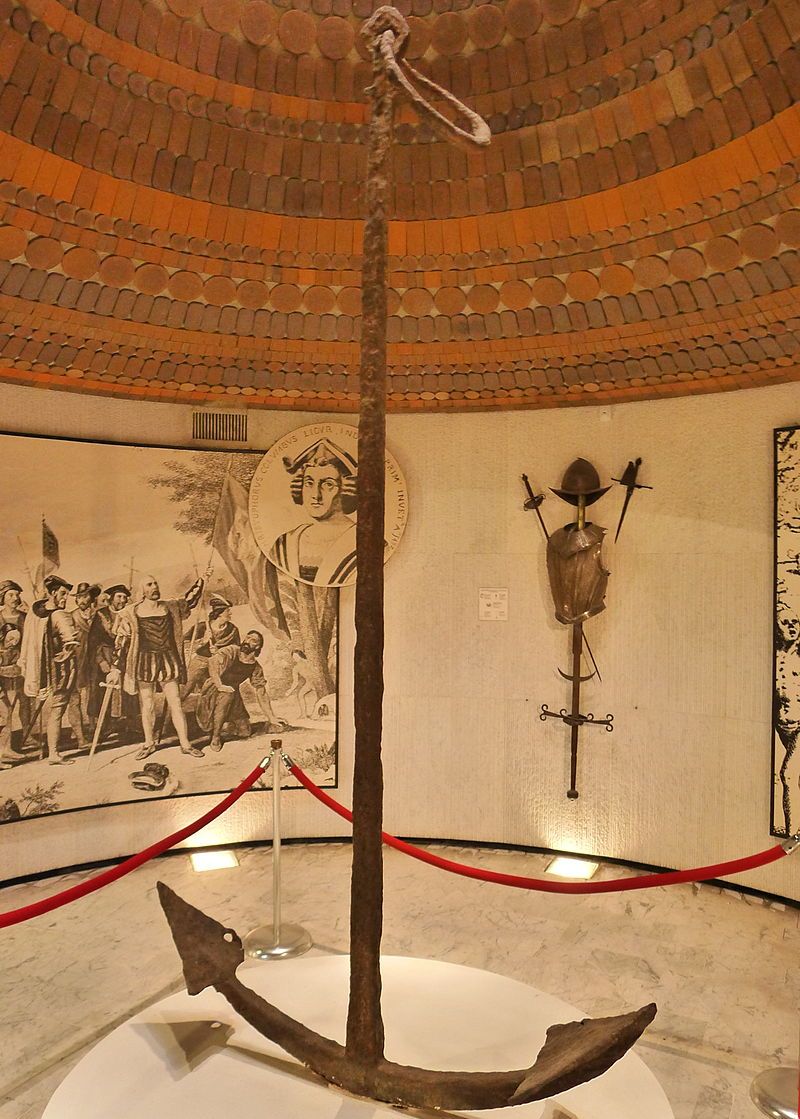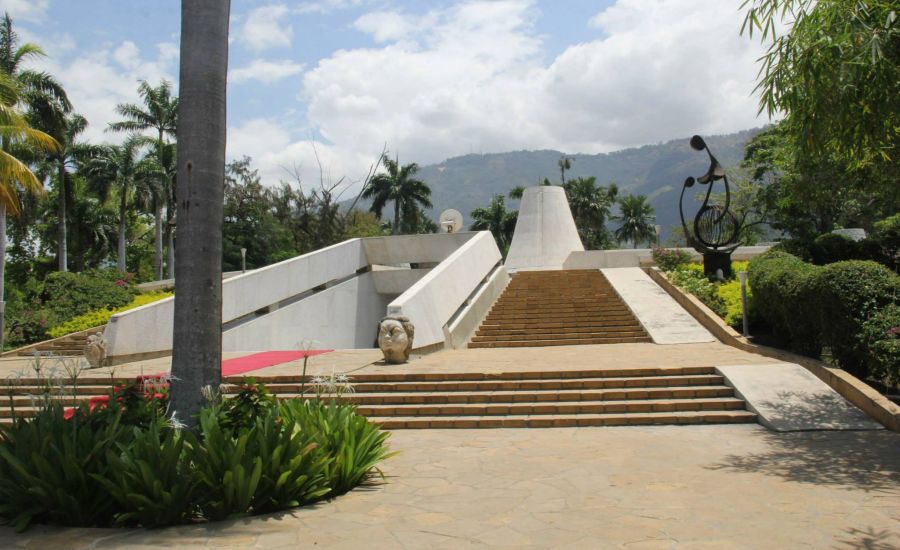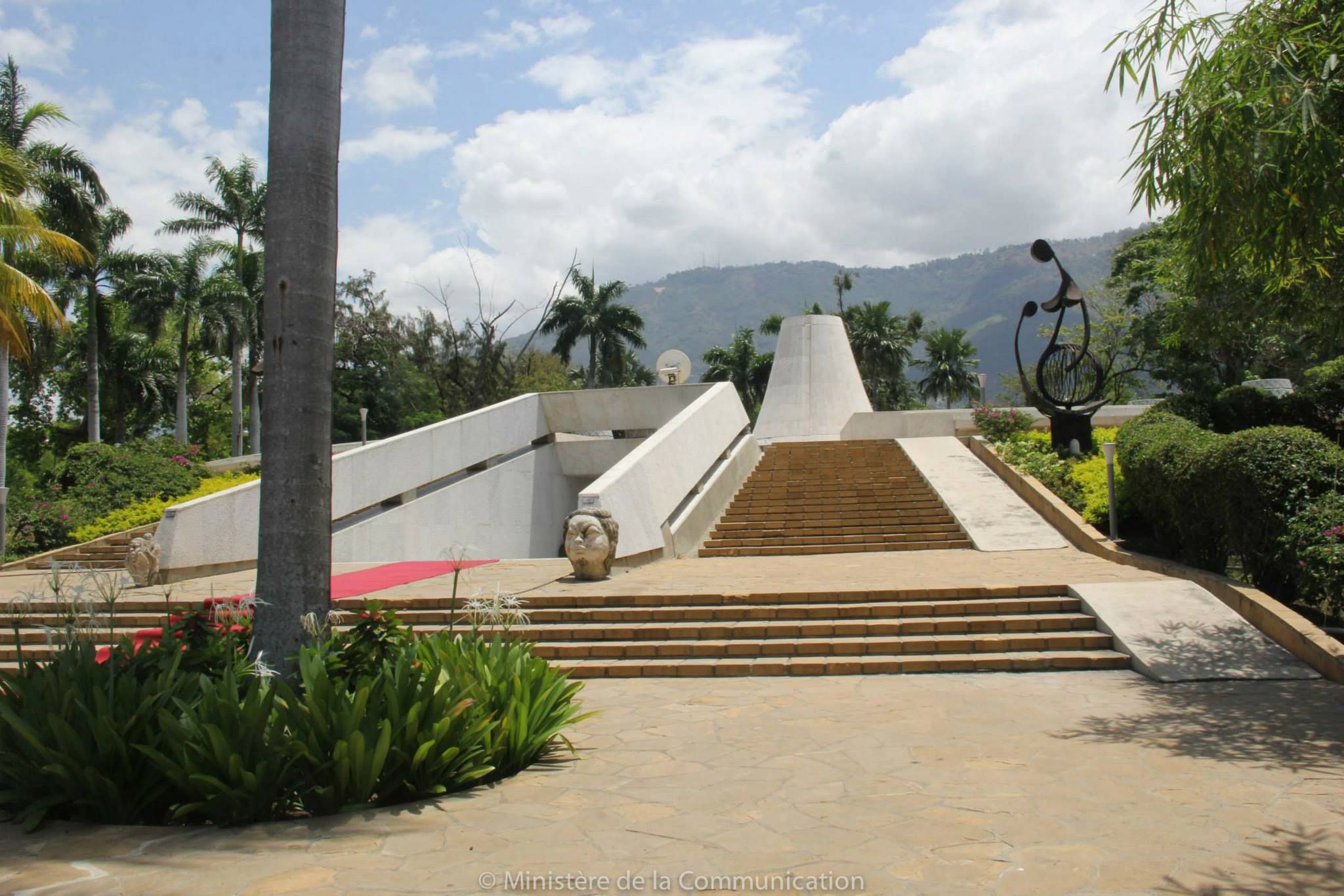Musée du Panthéon National Haïtien
Champs de Mars
-
Location:
Ville De Port-Au-Prince, Ouest, Haiti
Entrance du MUPANAH
The Musée du Panthéon National Haïtien was opened in 1983. This cultural center is to perpetuate and disseminate the memory of "Fathers of the Nation. One of its main missions is to participate in heritage conservation and dissemination of national culture. The MUPANAH is an institution whose function is the conservation, protection and enhancement of historical and cultural heritage.
The museum traces Taínos, Spanish, and a section dedicated to the heroes of independence including silver gun with which Henri Christophe committed suicide and the bell used to announce the independence. It also contains chains of slavery, torture instruments, sculptures and temporary exhibitions of paintings. Another curiosity, the anchor of the Caravel of Christopher Columbus, the Santa Maria measuring 4 meters high.

Liberty Bell
Liberty or Death
Cloche de la liberté sonnée lors de l'abolition de l'esclavage dans la colonie de St Domingue,
le 29 août 1793 - © Collection MUPANAH.
Je renaitrai de mes cendres." This first Republic noir has a history that would fill volumes ; and, as the past is, the parent of the present, some knowledge of that history is necessary to a just estimate of the position of Haiti as a nation, and to a true understanding of the character of his people. This is a quote from Maria Weston Chapman ...
Shipwreck
One of Santa María's alleged anchors on display at Musée du Panthéon National Haïtien.
With three masts, Santa María was the slowest of Columbus' vessels but performed well in the Atlantic Ocean crossing. Then on the return trip, on 24 December (1492), not having slept for two days, Columbus decided at 11:00 p.m. to lie down to sleep. The night being calm, the steersman also decided to sleep, leaving only a cabin boy to steer the ship, a practice which the admiral had always strictly forbidden. With the boy at the helm, the currents carried the ship onto a sandbank, running her aground off the present-day site of Cap-Haïtien, Haiti. It sank the next day.[8][9][10] Realizing that the ship was beyond repair, Columbus ordered his men to strip the timbers from the ship. The timbers were later used to build a fort which Columbus called La Navidad (Christmas) because the wreck occurred on Christmas Day, north from the modern town of Limonade[11][12] (see map, and the photograph).
Santa María carried several anchors, possibly six.[13] One of the anchors now rests in the Musée du Panthéon National Haïtien (MUPANAH), in Port-au-Prince, Haiti.[14]
On 13 May 2014, underwater archaeological explorer Barry Clifford claimed that his team had found the wreck of Santa María.[15][16] In the following October, UNESCO's expert team published their final report, concluding that the wreck could not be Columbus's vessel. Fastenings used in the hull and possible copper sheathing dated it to the 17th or 18th century.




